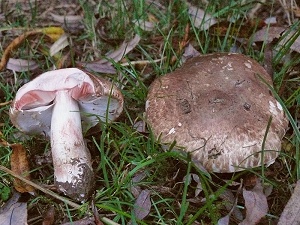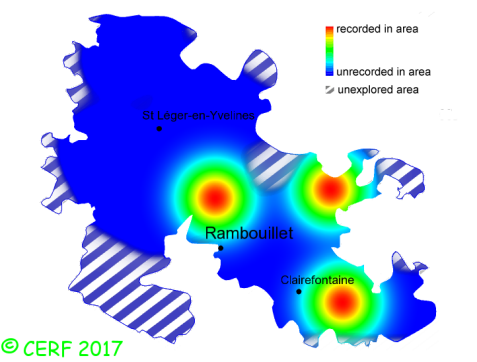| Agaricus haemorrhoidarius Schulzer |
|
|
|
|
|
|
The cap is brown on a white background, reddening. The cap surface is scaly, not viscid nor sticky. The stem is bulbous, with a membranous ring. The flesh is turning blood red quickly and strongly when exposed to air; the odour is faint, pleasant; its texture is fibrous. The gills are free, crowded . The spore print is brown. This species is saprophytic. It grows on the ground. The fruiting period takes place from July to November.
Chemical tests : no reaction to Schaeffer's test. Distinctive features : flesh turning to bright and intense red when exposed to air; reddening of the mushroom when touched or bruised; bulbous stem base; gills pink then brown; in forest edges Agaricus haemorrhoidarius is quite rare and localised in the forest of Rambouillet, and is infrequent, more generally speaking . | ||
|
page updated on 14/01/18

